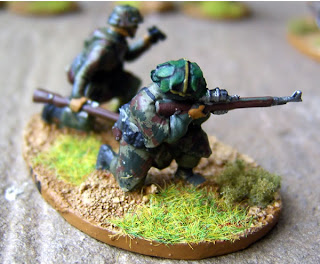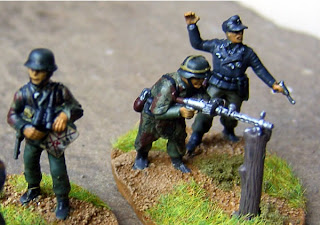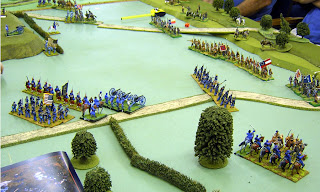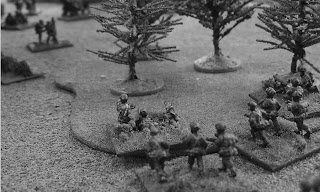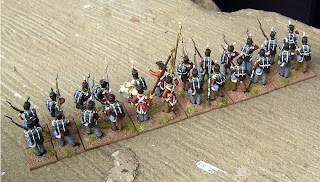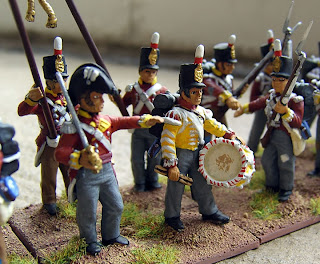Gladly when I got to play 'Diplomacy again for the first time in about 20 years, there was no such disappointment.
There ended up being only three of us on the day, which is possibly the worst multi-player option. But nevertheless a good game was had, though in 4 hours we only managed 6 out of the maximum 14 years (12 turns) of play.
I had control of Britain and Turkey, whilst James was France and Russia, and Ross took Germany and Austria. I vaguely recalled Turkey being in a strong position whilst Britain is weaker, so resolved to use Britain as Turkeys Pawn in a bid to conquer the Balkans and Russia. Sure enough my diplomatic style - be matter of fact with my opponents, tell them the truth, especially about what they had in mind for each other, but not all the truth; and try to give the impression the only sensible thing to do was what I told them - worked a charm. James early on in particular left both north and south Russia unoccupied, thinking I meant him no ill will. I did, and marched into both areas unopposed. Russia never recovered!
 Still, it didn't all go my way. Germany was building up a degree of strength, and was able to dodge the British navy, long enough to occupy London, the Liverpool. England was done for, the British role of supporting Turkey made them sacrificial for me however. The long game was the Balkans and slowly Turkey and France pushed the Austrians out.
Still, it didn't all go my way. Germany was building up a degree of strength, and was able to dodge the British navy, long enough to occupy London, the Liverpool. England was done for, the British role of supporting Turkey made them sacrificial for me however. The long game was the Balkans and slowly Turkey and France pushed the Austrians out.James had quietly and unopposed built the French into the largest force in the game, whilst Ross discovered that his strike into England had served only to trap his armies there. At the end of the game, he was in big trouble, with the French massing on his borders, and his Austrian ally reeling under pressure around Serbia and Vienna. It was clear that France and Turkey, given time would divide the spoils of Europe.
Great fun, but a little slow due to the three handed nature of negotiations; the game really needs four or more players. Still I think the next time we play, hopefully not in another twenty years, we should manage a few more leaders.
Another aspect of playing this was plenty of time to wander round with the camera. What caught my eye most despite the size, were these sweet looking 6mm Romans, based for Warmaster Ancients:
 Oh dear, they looked lovely, and I had a long chat about available armies and so on. Some years ago I broke up and sold my old 6mm ancients as I had no opponents for them. Now I'm tempted by one of my old favourites, the Numidians again. Dammit, I was trying to buy less and paint more!
Oh dear, they looked lovely, and I had a long chat about available armies and so on. Some years ago I broke up and sold my old 6mm ancients as I had no opponents for them. Now I'm tempted by one of my old favourites, the Numidians again. Dammit, I was trying to buy less and paint more!The other historical game of the day was a large Flames of War game, on an 18x4 foot spread, with I guess a one to one scale battalion on each side.

Personally I find FoW doesn't appeal as a rule set; it takes the GW mould in making the period accessible and covering all the info a player could need; and that's good. But it also goes down routes I don't like: Exception rules tagged onto basic rules to cover virtually every contingency, an obsession with getting as much on the table as possible, using short ranges to accommodate this on small boards, being wedded to a points system for (shudder) 'Tournament play', and so on. The result to my eye is a game, which doesn't end up feeling right, neither in look or style of play.
 Of course, I am quite particular about modern wargames anyway. I too would play company and battalion sized actions, but at the 'Step Up' scale typically; where a Section of figures represents the whole platoon, so thirty or forty men represents a company. That would be the most I'd put on a 6x4' table. rather than 100+ men and a dozen or more tanks...
Of course, I am quite particular about modern wargames anyway. I too would play company and battalion sized actions, but at the 'Step Up' scale typically; where a Section of figures represents the whole platoon, so thirty or forty men represents a company. That would be the most I'd put on a 6x4' table. rather than 100+ men and a dozen or more tanks...



